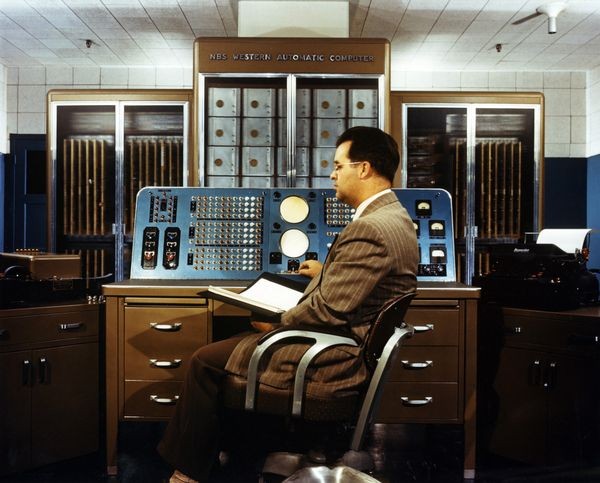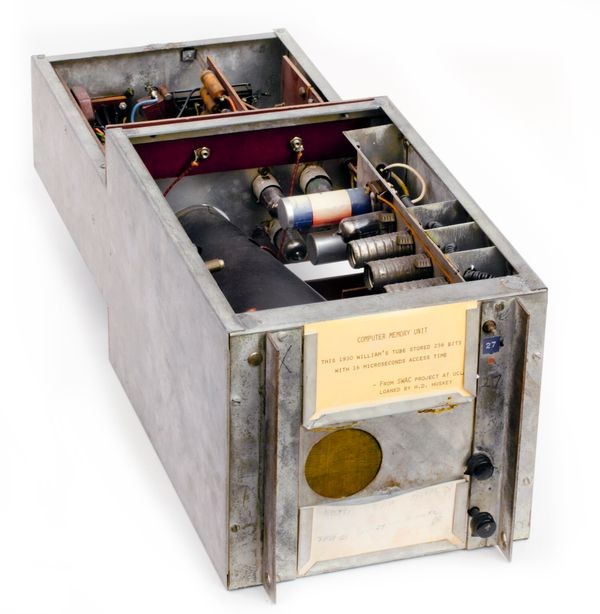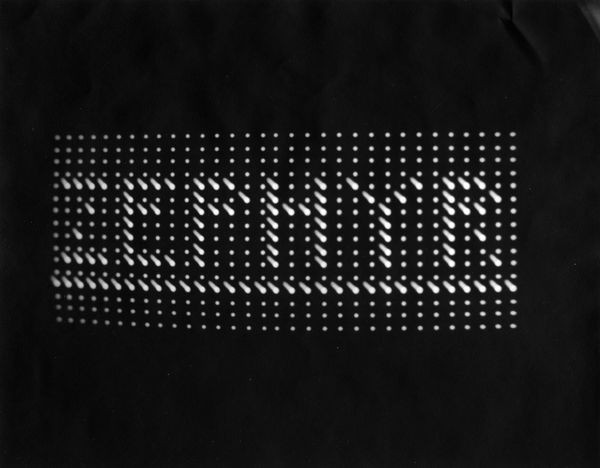A New Speed Record
Harry Huskey sits in front of the SWAC
Harry Huskey had been an engineer on the ENIAC, EDVAC, and ACE computers and worked in the UK with Alan Turing before designing the SWAC. Huskey joined the NBS Institute for Numerical Analysis in 1948.
A New Speed Record
Impatient waiting for a commercial successor to ENIAC, the U.S. National Bureau of Standards opted in 1948 to create its own electronic computer.
The SWAC (Standards Western Automatic Computer) became the world’s fastest computer when completed in 1950, a year before Princeton’s IAS machine.
SWAC Williams-Kilburn tube
SWAC, like the Manchester “Baby,” used Williams-Kilburn tubes for memory. The unreliability of commercial tubes was traced to microscopic specks of lint embedded in the tubes’ phosphor because they had been manufactured in a converted mattress factory.
View Artifact DetailSWAC logic module
The SWAC computer was built using modular units for easy maintenance. It was reliable enough to run programs that took over 100 hours, an accomplishment that few early computers could equal.
View Artifact DetailNBS Western Automatic Computer (NBSWAC) sign
The National Bureau of Standards could not find computers to buy, so they had two custom machines built: SEAC, for its National Applied Mathematical Laboratories in Washington, D.C; and SWAC, for the Institute of Numerical Analysis in Los Angeles.
View Artifact DetailSWAC Williams Tube display
Unlike modern memory, data in “TV” tube memory can be viewed directly. SWAC’s code name “ZEPHYR” is on the face of the screen here. Because the technology was unproven, NBS insisted that magnetic drums be available as an alternative.
View Artifact DetailRelated Content
Check out this video to learn more about the unique history of SEAC:
Standards Eastern Automatic Computer (SEAC)
This presentation features key individuals from the SEAC project, design engineers Ruth Hauter Cahn, Robert Elbourn, Sidney Greenwald and Russell Kirsch. It is organized into eleven sections that address key questions about SEAC, for example, why SEAC may be the first computer, why it was built, its uses, its influence and how it was built and worked. View the the video's complete transcript here.
View Artifact Detail




